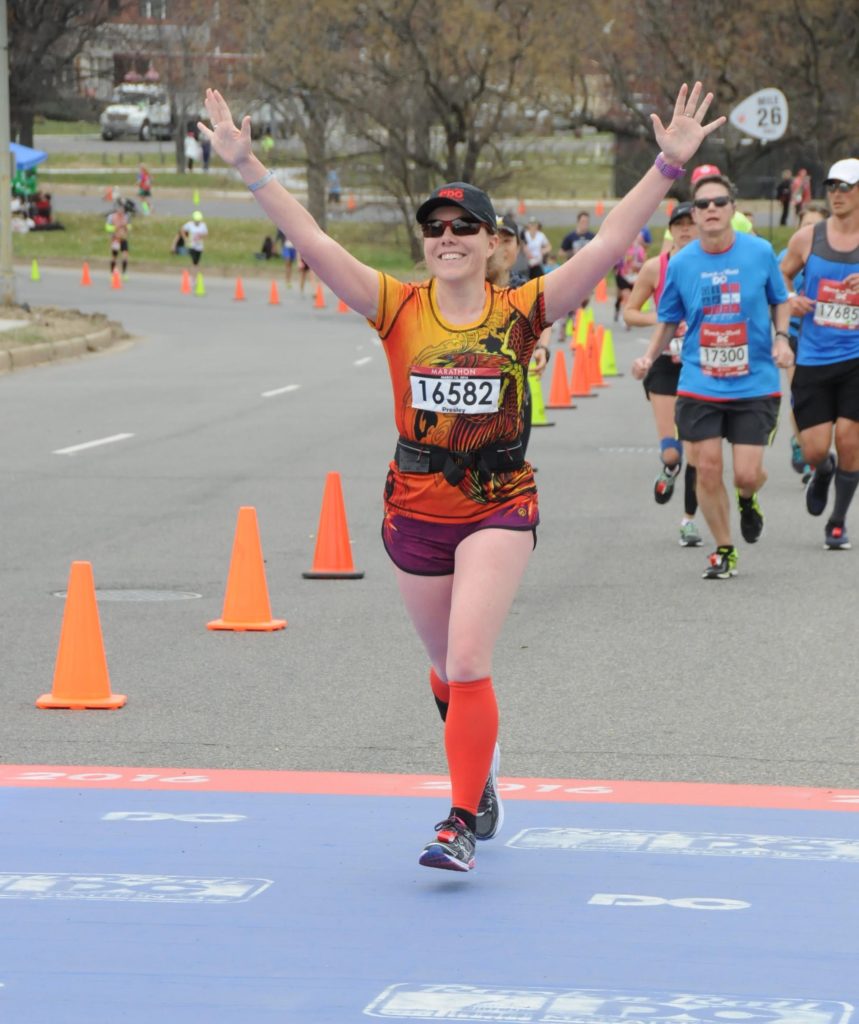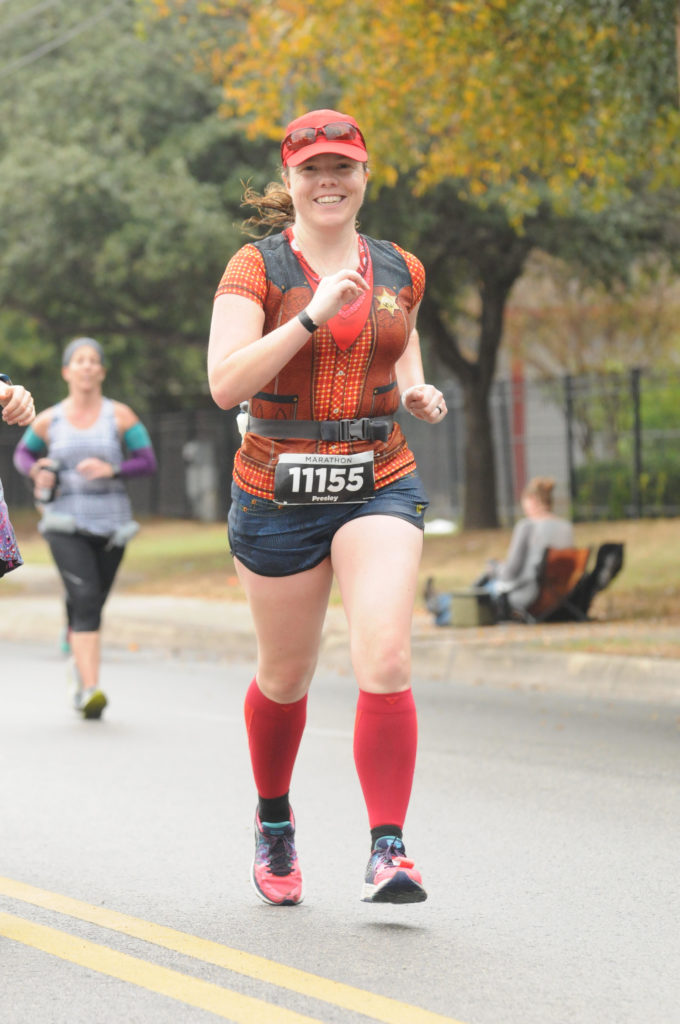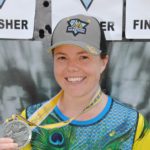By Sarah Presley Dasaro
 The evening of September 6, 2012, my life and my perspective on life changed forever. A few hours after returning from the Burning Man, I suffered a brain aneurysm rupture. It started with a burst of pain in the center of my brain that quickly radiated and filled my entire head. I curled up in the fetal position and told my boyfriend that something was wrong. He brought me a bottle of water. The moment the water touched my lips, I began vomiting. I had tunnel vision, was light sensitive and in the worst pain I could imagine. Through military experience, this is when my boyfriend recognized that I was displaying the symptoms of brain trauma.
The evening of September 6, 2012, my life and my perspective on life changed forever. A few hours after returning from the Burning Man, I suffered a brain aneurysm rupture. It started with a burst of pain in the center of my brain that quickly radiated and filled my entire head. I curled up in the fetal position and told my boyfriend that something was wrong. He brought me a bottle of water. The moment the water touched my lips, I began vomiting. I had tunnel vision, was light sensitive and in the worst pain I could imagine. Through military experience, this is when my boyfriend recognized that I was displaying the symptoms of brain trauma.
By the time the paramedics arrived, I was unable to sit up. It felt as though my entire body had gone rigid. I was taken to a local hospital where they diagnosed the aneurysm rupture. Next I was taken into emergency surgery. A thin platinum wire was passed through my femoral artery in my leg all the way up to my brain. The wire was then coiled into a ball inside the ruptured aneurysm to stop the bleed. The next few days were a blur — literally, because I had double vision. I drifted in and out of consciousness.
Once I was coherent, a team of cardiac surgeons came to deliver my next surprise. In addition to the brain aneurysm, I had also been diagnosed with a congenital heart defect — an aortic coarctation. A normal aorta should be as thick as your thumb. During my first few weeks of development, for unknown reasons, my aorta formed constricted. It was constricted down to the point of a ballpoint pen! Doctors were amazed when I told them I was a runner. Although, they did mention that my collateral arteries were much larger than normal. This was my body’s attempt to compensate for the deficiency. There has been research done about a possible link between adults with an unrepaired coarctation and brain aneurysms.
Exactly three months after my brain aneurysm rupture, I underwent surgery to repair my aorta. A stent was placed in the aorta to open it up and allow proper blood flow. Shortly after waking from surgery, I asked my surgeon how soon I could start running again and train for a half marathon. He gave me his blessing to start training as soon as I felt up to it.
 Recovering from my brain aneurysm was one of the most challenging things I have ever done. When they first removed my catheter, the nurses offered me two choices. They told me I could use a bedpan, or I could call for assistance to the restroom. “You will get better faster if you get up.” Not being one to turn down a challenge, these were the magic words. Even though getting up to simply use the restroom seemed like a monumental task, I started looking forward to the challenge. I enjoyed the ache in my muscles from simply walking across the room. Because I suffered from double vision, I trusted my body to remember what it feels like to walk in a straight line. When I returned home from the hospital, it would completely wear me out to walk down to the mailbox. I began walking down to the mailbox several times a day. Everything hurt. I constantly felt tired. But I never stopped pushing.
Recovering from my brain aneurysm was one of the most challenging things I have ever done. When they first removed my catheter, the nurses offered me two choices. They told me I could use a bedpan, or I could call for assistance to the restroom. “You will get better faster if you get up.” Not being one to turn down a challenge, these were the magic words. Even though getting up to simply use the restroom seemed like a monumental task, I started looking forward to the challenge. I enjoyed the ache in my muscles from simply walking across the room. Because I suffered from double vision, I trusted my body to remember what it feels like to walk in a straight line. When I returned home from the hospital, it would completely wear me out to walk down to the mailbox. I began walking down to the mailbox several times a day. Everything hurt. I constantly felt tired. But I never stopped pushing.
Soon after I started going for light runs again. Through the recovery process, I struggled with depression and the feeling of isolation. At only 29, I didn’t know anyone in my age group who had been through such a major medical ordeal. Whenever someone would tell me about a friend or family member who had also had a brain aneurysm, the story always ended with their death. Just once I wanted to hear about a brain aneurysm survivor who went on to run marathons and lived happily ever after. Ultimately, for my mental health, I became the person I so desperately wanted to find and connect to.
In February 2013, I ran my first post-aneurysm half marathon. In June 2014, I ran my first post-aneurysm full marathon. Returning to running was a large part of my physical and mental recovery. It gave me a goal. It gave a purpose. It gave me a community, and it helped me regain my sense of self.
Every day, I am thankful to be alive and that I am still able to run. To date, I have run 139 half marathons (136 of which are post-aneurysm) and 28 full marathons (19 of which are post-aneurysm). The LA Marathon is extra special to me because at mile 1, we run by my old apartment where my aneurysm rupture occurred. Oh, and the boyfriend who was with me the night of my rupture? We are just about to celebrate our two-year wedding

Sarah Presley Dasaro
Sarah is an avid runner and hiker. She is a newbie cyclist. Sarah loves wine, tea and cats. She is also a brain aneurysm and congenital heart defect survivor.




